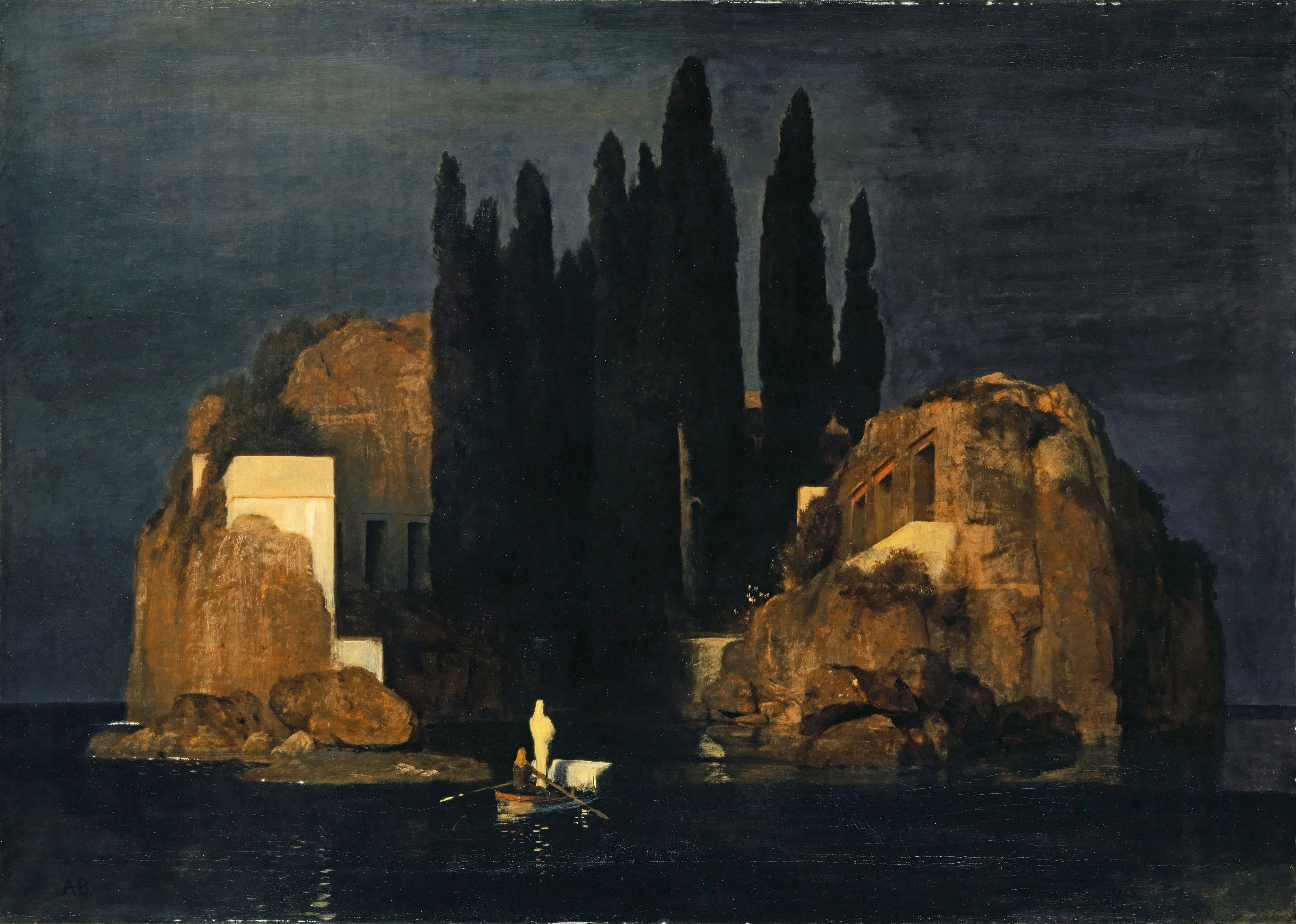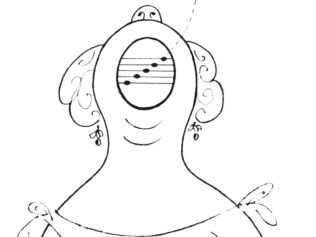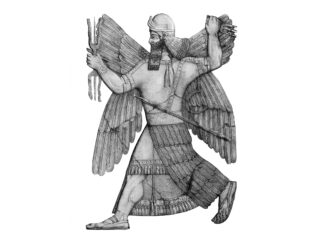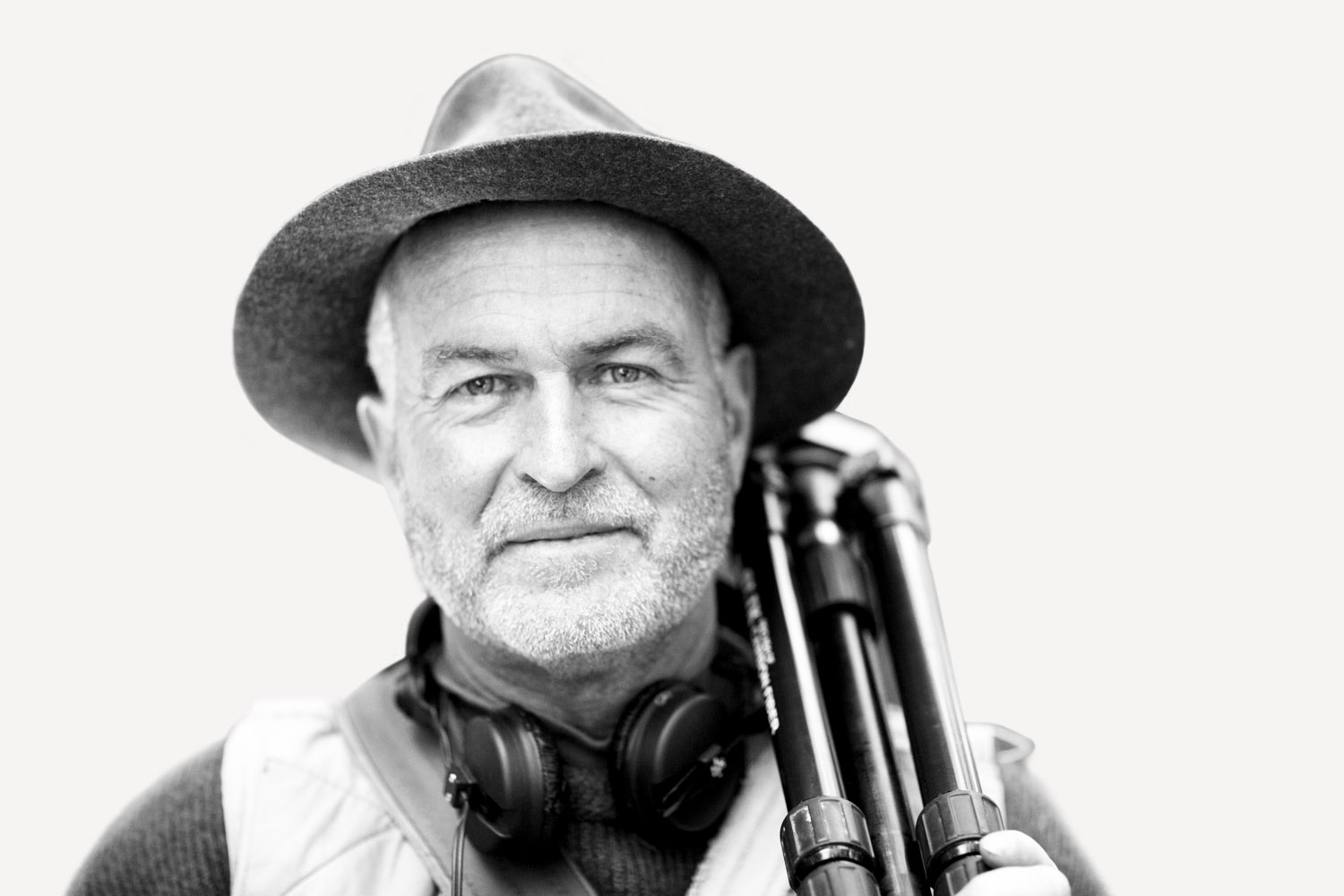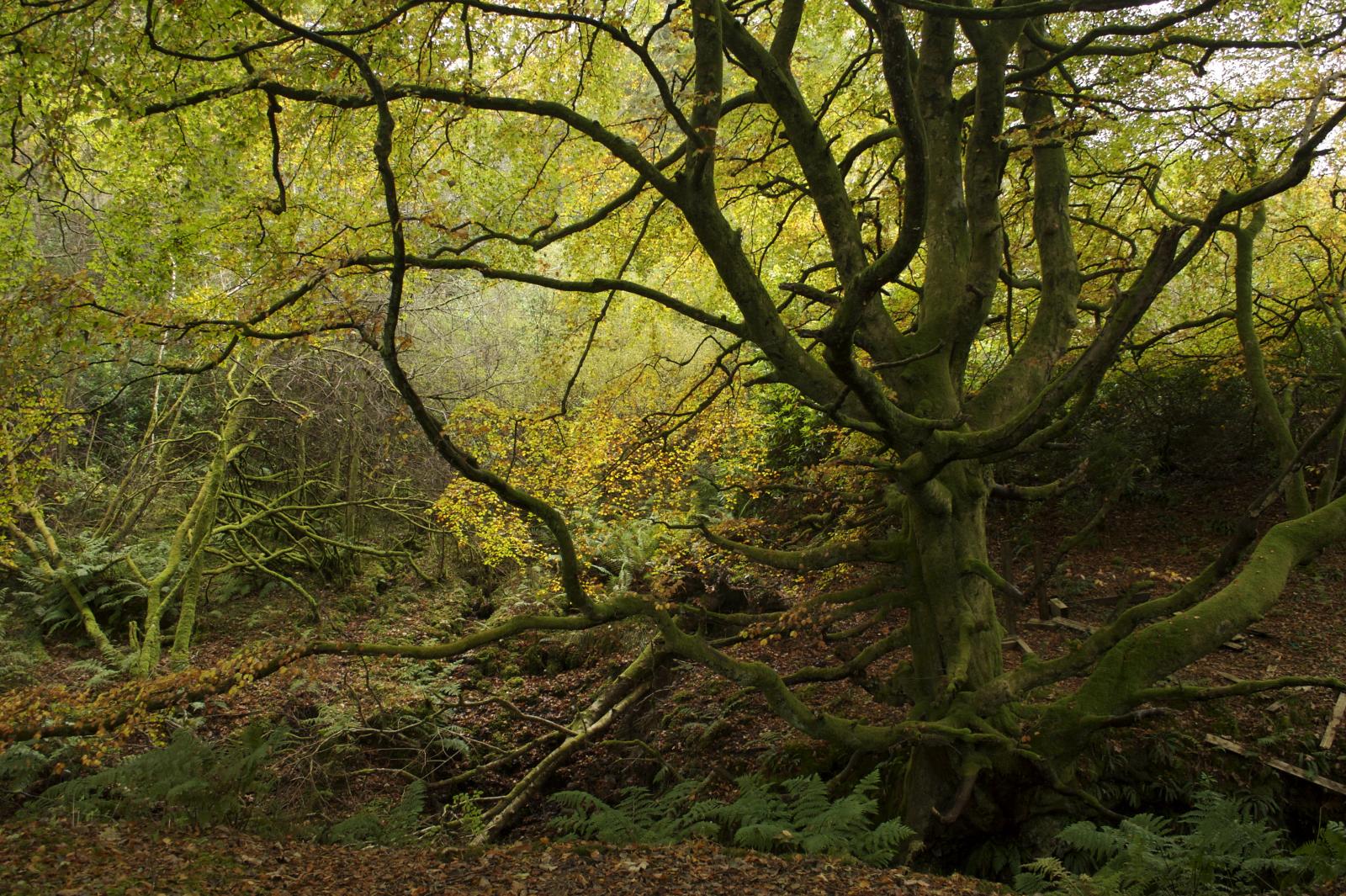
The silence of rituals, protective silence, silence as a reflection of the afterworld. People’s relationship with silence has had a long and rich history. Amid the noise of the present day, is there still a way back into this relationship?
“Only peace and quiet. […] You have no idea of its power.” remarks the anonymous protagonist of A Treatise on Shelling Beans, a novel by Wiesław Myśliwski, to his interlocutor, who has arrived from so-called high society. The narrator-protagonist goes on to describe how silence cyclically returns to the place where he is having the conversation with his guest: a colony of lakeside summer cabins, surrounded by woodland, with the river Rutka meandering nearby. Every year, silence is chased out of the area by the hustle and bustle of the summer season. The hubbub is brought by holidaymakers who talk quickly, at the top of their voices. They do their unfinished business over the phone. They play music, and leave the lights on in the cabins late into the night.
The cycle of nature
Is this summer bustling an attempt, on the holidaymakers’ part, to defend themselves against silence? What would happen if they let silence near them? What would it tell them? Perhaps it would turn out to be painful, embarrassing – or even infuriating? Perhaps it would fill them with sorrow? Oh yes, silence might be difficult, which is why it is best chased away. And yet it will come back, despite everything. It will slip into the colony late at night, along with its companions: darkness and stillness. It will settle in for good come autumn, when the exhausted nature gradually begins to die, losing its vitality, its colours, shapes and smells – and eventually becomes lethargic with the approach of winter. That is when it will be possible to experience silence once again. “To just listen intently – in the off-season of course – to the sky, the lake, the early morning, the sunset, the night when there’s a full moon, to go into the woods and listen to all the trees and bushes and plants, to lie down in the moss.” The protagonist of A Treatise on Shelling Beans encourages us to get carried away by the power of silence, despite everything, and agree to the terms it sets, the way it swells and recedes, depending on the season. The energy of silence is inextricably linked to the rhythm of nature, and that rhythm is defined by the cyclical rebirth and dying down of life. There was a time when the cyclicality of nature translated into experiences fundamental to human existence. Periods of silence and stillness occurred both in nature and human life.
Today, the issue of silence is usually brought up in the context of its absence, and related to the civilizational risks that its absence entails. Physical and mental health can both suffer as a result of excessive decibels. From which it follows that silence is beneficial – but is that all there is to it?
In his book O jednorożcu, wieczerniku i innych motywach mniej lub bardziej ważnych [On the Unicorn, the Cenacle and other motifs of various importance], folklorist Professor Piotr Kowalski observes that “it is a good idea to set out to explore cultures whose approach to both silence and noise (and the daily hustle and bustle) was different than ours. How cultures approached these issues was not only a matter of mental wellbeing, but generally a way of being in the world and understanding it.” Can we still return to that meaningful silence?
The cry of the Great Goose
In the beginning there was chaos. This is how cosmogonic myths usually begin, and the one from Egypt is no exception. There was a time (goes the myth) when there was no earth or sky, no sun or moon, mountains or rivers, plants or animals. No points or reference, directions, names or forms. The only existing thing was Nu: an immense, undefined, everlasting aquatic boundlessness. Nu was dark and silent. A huge cosmic egg, laid by an ibis, the ur-bird, floated on the surface of the water. According to one of Egypt’s cosmogonic theories, a goose hatched from the egg. The cry of the Great Goose interrupted the cosmic silence. The world emerged out of the chaos. As Professor Kowalski remarks in On the Unicorn: “Silence, absolute stagnation and the absence of sound: these are the terms in which the pre-cosmic void is represented. […] The cosmic Ur-ocean, with its incessant monotonous undulation, is the image of the pre-initial state of things.”
The cosmogonic myth tells the story of the beginning of time, when gods and heroes decided to share their invaluable knowledge with humans. They identified the edible plants and the ones that could be used as medication. They instructed people on how to cultivate land so that it yielded abundant crops year on year. Animals were sent to assist humans. In addition, the gods gave people the law: transgression was punished and a law-abiding attitude rewarded. Thus the cosmogonic myth includes an archetypal model of all creative activity; it provides a template for both the festive period and the everyday. In traditional culture, people attempt to reactualize the myth of origin by means of appropriate rituals that entail imitating the divine gesture. According to the historian of religion Mircea Eliade, following divine models enables people to express their ontological longing and a thirst for sanctity.
At times it may seem that, in traditional cultures, people were little more than pawns in the divine game: living in perpetual fear of the destructive power of elements they had little understanding of, yet tried to tame. However, if we examine various sources closely, we readily find many instances of human ‘agency’. Different communities evoke the origin myth in their rites, solely for the purpose of coming closer to the gods. As Professor Kowalski stresses: “Only by coming into contact with the afterworld, which is free from the destructive passage of time, free from transience, sickness and death, was one able to acquire the powers necessary to change the day-to-day reality in which mortals lived.” However, coming into contact with the sacred was only possible under certain circumstances. Remaining silent was one of them. Why was that?
The shadows are mute
In traditional cultures, silence, stillness and darkness are among the basic metaphorical representations of the afterworld. This other world is also an image of the locus horridus: swamps, deserts, mountains, woods and crossroads. Unfamiliar, frightening, non-human spaces that are home to a variety of demonic beings.
Noise, ostensibly associated with life, is in fact a reflection of the afterworld, as is silence. Screams, hustle and bustle, din, clamour and howls are the polar opposites of both orderly human speech and the essence of communication. The topos of a wild hunt, known from folklorist records, shows a group of spirits who are hunters. They had spilled blood, thus tarnishing their names with death, and the impurity of death. They are forever doomed to wandering the world aimlessly. The spirits are hustling and bustling, and thus reveal they belong to the afterworld.
What is the afterworld like? It is radically different from reality as people know it: savage, dangerous and unknowable. It is also free from transience, illness and death; one would search it in vain for any vestiges of the biology of existence. It is the domain of darkness where shapes are indistinct and a sense of direction non-existent. Our nose won’t recognize any smells there. Senses are of no use in the afterworld. Time? It does not pass there. Weight? There is no materiality in the beyond. Communication? Words are meaningless and powerless. They appear helpless in the face of the sacred, devoid of their creative power. Shadow-souls roam the afterworld that is their home. Only the very brave (and very determined) can face them – take Orpheus, searching for his Eurydice.
The shadows do not speak, they are completely silent. However, eliciting an articulate sound from them is not completely impossible. Having spent a year in the palace of the welcoming Circe, Odysseus takes her advice and travels to the dark land of the Cimmerians, where an entrance to the underworld is supposedly located in Persephone’s wood. Odysseus hopes he will be able to meet one particular resident of the beyond: the prophet Tiresias, whom he wants to ask for guidance. Odysseus raises the prophet by pouring blood – a symbol of life – into a sacrificial hole. Having drunk the blood, Tiresias interrupts the silence and begins his prophecy. In the theatre of his own existence, Odysseus is keen to peek backstage. He wants to know where this existence will lead him, and hence decides to come into contact with the (radically alien) sphere of the sacred. There were other figures who took this very brave step.
St. Anthony was born to a well-to-do family, and so he was able to enjoy his wealth and live in the moment. Yet he found the urban hubbub tedious, and the noise and company of other people exhausting. He was keen to discover himself and get to know the truth; he longed to encounter God. After his parents died, Anthony gave away his possessions, placed his only sister in a convent and set out into the desert. Again, he was not the only one to follow this path. Before and after Anthony, many figures who had a lasting impact on our culture set out into the desert, into the woods, to the mountains, inside a labyrinth. They sought to acquire a new identity, make sure the decision they had taken was the right one, or revise their plans. As Professor Kowalski points out: “To get to know the truth, or to pray, you need to step beyond the universe and its systemic order; after all, the inner world cannot be grasped with the words used to describe the realities of one’s daily life. […] You need to break free from the constraints of the human condition; and that entails symbolic death, and consenting to a temporary destructuring of the world in which the human lot normally unfolds.” Silence is one of the requisites here: it is necessary for coming into contact with the sacred. In any case, words stop at the boundary of the human world: beyond that boundary, in contact with the sacred, they become useless. The sacred is ‘unrecountable’. Anthony the anchorite was wrong to think all he had to do to find silence was to escape the city and other people. In the desert, he was beset with demons, noise and commotion, which he turned out to carry within.
Soothing and ominous
Today, we expect silence to soothe us (restorative silence). Silence allows us to rest (recreational silence). In silence, we often dream about the future and have regrets about the past (contemplative silence). Needless to say, deathly silence makes us feel uncomfortable. The quiet before the storm is no pleasant experience – not to mention silent treatment. Notwithstanding all that, silence is usually regarded as a positive, heartening phenomenon. The fact that it is becoming ever more scarce increases its value. It has not always been this way. Looking at the history of people’s relationship with silence, one finds that, most of the time, silence has inspired genuine fear. Anthropologists explain this by pointing to a link between silence and images of death and the afterworld. Then there is the recurrent literary theme of silence as a symbol of the afterworld.
This kind of silence does not soothe us or put us to sleep; nor does it bring any respite. It is ominous, and occasionally leads to madness. One would like to escape this sort of silence, except there is nowhere to escape – and thus it becomes a trap. Characters in The Shadow-Line by Joseph Conrad become similarly trapped. “After sunset I came out on deck again to meet only a still void.”; “A great over-heated stillness enveloped the ship and seemed to hold her motionless”; “the profound silence returned” – silence-themed sentences are woven into the fabric of Conrad’s novel. The crew of the ship are yearning to hear even the slightest sound. The extreme silence causes so much tension that Burns – first officer, worn out by malaria – summons up the last of his strength to crawl from his berth onto the deck. He is desperate for even the slightest sound; anything to break the silence that drives him to despair. Oh please let someone say something, anything. Maddened, the officer cries out: “Confounded dumb ship with a craven, tip-toeing crowd. Why couldn’t they stamp and go with a brace? Wasn’t there God-forsaken lubber in the lot to raise a yell on a rope?”
Stillness as depicted in Conrad’s novel brings to mind the silence that was there at the beginning of time, before the world emerged from ur-matter. At last, drops of rain hit the deck – reluctantly at first, and then ever stronger. The upper sails begin to flap. The wind moves the (previously virtually still) ocean. The ship gains speed. This is where chaos ends and the cosmos begins. However, these are not the only cultural tropes in The Shadow-Line. The ship drifting in the Indian Ocean – amid deadly silence, in emptiness and darkness – can be compared to wandering in the afterworld, the dark realm of death. Obviously, Conrad’s characters have no wish to end up in the beyond. They would like to escape. But there are times when there is no alternative: one needs to go through ritual death to be reborn.
The rite of passage
The Peasants, a novel by Władysław Reymont, includes numerous depictions of rites of passage, but it is the wedding ceremony that strikes readers as the most spectacular. At the same time, the ceremony’s underlying emotion is the profound sadness of Jagna, the book’s female protagonist, who changes her status during the oczepiny ceremony: she undergoes transformation from maiden to married woman. This is not how things were supposed to turn out. Jagna had made her choice earlier, and she chose another, younger man. Yet she, like many women of our culture, was told to ‘marry a gaffer’.
The oczepiny ceremony begins with women leading Jagna to the bedchamber. Reymont does not give us an exact description of what happens there, but we can infer from ethnographic sources that the swachas (women) take the maiden’s garland off Jagna’s head and replace it with a bonnet. When the women lead Jagna out of the bedchamber, she is already wearing the white bonnet on her braids. The women make the bride sit on a duvet-covered kneading trough. This wooden receptacle where dough is kneaded (and grown) is a symbol of fertility. During the ceremony, Jagna is passive, devoid of character, subjected to the actions of those taking part in the rite. At the key moment, she remains completely silent. What, in fact, is happening to her? A change of status requires stepping outside culture, into an undifferentiated chaos. One must rid oneself of the (by now outdated) form of existence (often, this entails the shedding of one’s name) and symbolically distance oneself from one’s former environment. Going through a ritual death is necessary so that one can be reborn in a new form. Jagna’s stillness and silence indicate she is within the death zone, in a state of temporary disarray; in the realm of the sacred. Hers is a liminal situation: Jagna is no longer a maid, but not yet a married woman. She is in the precarious ‘in-between’ zone.
In the past, individuals would experience such ‘in-between’ states far more frequently throughout their lives. Culture provided people with scenarios for conducting themselves in such moments, effectively organizing these – essentially very difficult – experiences. The scenarios varied among themselves, but they had one thing in common: silence. Silence is still an inherent part of subsequent cycles of human life.
The dying house
This funeral is unlike any other. It is not a person that has died, but a house. The house in which Darya Pigrina was born and has lived all her life. This was also where she was supposed to die, so that things would run their natural course. What she did not expect, however, was that the house would die first.
Darya is the protagonist of Farewell to Matyora by Valentin Rasputin. Siberia is a recurrent motif in the work of the Russian author: local people and Siberian nature, with its opaque beauty. Rasputin is not interested in the cities of Siberia: Omsk, Irkutsk and Novosibirsk. His interests lie with the glubinka, the mythical provincial Russia. Underlying his books is the fear (quite universal, in fact) that before long, the Siberian countryside – with its history, tradition and its entire culture – will be engulfed by progress, the city, the unknown. This fear is most explicit in Farewell to Matyora, originally published in 1976. The titular Matyora is a village on the banks of the river Angara. Due to the fact that a hydroelectric power plant is about to be built in the area, the village is to be submerged, all houses burned down, and their residents relocated to the city. For Darya, the end of Matyora is her own personal end of the world. She has no idea what to do next, so she goes to the cemetery and, standing by her parents’ grave, she suddenly hears a voice. The voice is not coming from outside, but from within herself. Now Darya knows what to do.
She limewashes the walls of her house. Before she does that, she fires them, by herself. Even the shutters are covered with a thick layer of lime. Darya coats her stove with clay. She gives her windows, windowsills and partition a thorough wash. She scrubs the floor with a scourer brush and Angara sand. She scrubs and scrubs, until the floor begins to reflect the sun. She hangs curtains on the windowpanes and in the antechamber. She puts kitchenware items where they belong. All the while, she can’t shake the thought that there is something she has forgotten. She knew what was needed to say goodbye to a person, but she had no idea how to prepare a house for imminent death. Her forefathers never had to say goodbye to a house. Fir branches! Darya hangs them in the corners of the room; sticks them over windows. Now the house is ready to go. “‘It’s done,’ she told [the workmen] ‘Set your fire. But don’t set one foot in the house…’”
For two days, Darya prepared her house for death. Not a word came out of her mouth during that time. She limewashed and scrubbed in absolute silence. Not a sound came from the house, either – it is difficult to say whether or not this was deliberate on Rasputin’s part. The fact is, however, that old houses are very sonorous indeed: the floors creak, as do the subsiding beams. The wind howls in the chimney. The stove roars. Door hinges moan. Muffled murmurs come from the attic, indicating the presence of some animal, perhaps a marten. But Darya’s house fell silent. “An eerie and empty silence enveloped her – not a dog barked, not a pebble squeaked underfoot, not a random voice called, not a single breeze stirred in the heavy branches. Everything seemed dead.”
Matyora is lost under water. And silence falls, like after the deluge – except in this instance, there are no prospects of a rebirth. Once again, the silence is ominous and brings the afterworld to mind. However, there were occasions when different traditional cultures made use of this terrifying silence to the benefit of the community and the culture itself.
To protect and to envelop
Neighbouring villages are decimated by the plague; it is only a matter of time before the disease reaches us, too. To protect their village from imminent plague, local residents resorted to various magical means, just in case. These precautions were meant to make the border safeguarding the orbis interior (the familiar insider world) even tighter. One such magical practice (which, in Poland, continued into the 20th century) was the ritual of ploughing round the boundaries of the village. Thus a magical boundary was demarcated, and it was hoped the plague and death would stay on the other side. The effectiveness of this practice depended on meeting several conditions, meant to reactualize the beginning of time. And so people ploughed round the village in deadly silence, at liminal times during the day: at midnight or dawn. Characters who stood out in one way or another had to be part of the ritual: this included people who had come to the ploughing on an empty stomach, or people dressed in white shirts. Children, twins and virgins – beings in an initial state, devoid, as it was thought, of sexuality, were another crucial group. In silence, people returned to the mythical beginning of time, when everything had still been possible.
With healing rites, it was a similar story. Healing called for a recreation of the initial situation: placing the patient and the healer in the realm of the beyond. It was believed that this was the source of the power that helped get rid of one’s ailment, be it charm, fright, consumption or chills. The ailing individual had to be laid down on their back: on planks, haulm or straw – in other words, an inanimate object that symbolically belonged to the beyond. The healer made his way to his patient in silence. He did not even look at the people he met on the way, or return their greetings. The healing process itself also went on in silence, only interrupted in the climactic moment, when the healer uttered his magic formula.
Similarly, silence was necessary while collecting healing plants. The process entailed stepping outside the boundaries of the safe and familiar world: into the woods, into the mountains, into the emptiness. At dawn and in secret; often the escapade was preceded by a fasting period. Silence had to be observed. In this case, silence could offer protection from demonic forces – and demons had a taste for wastelands of all kinds, where humans were an easy catch for powers from the beyond.
What is the point of writing about the silence kept during the ritual running of the plough round the village if, today, this practice is but an ethnographic fun fact? Does anyone still set out into the wilderness – at dawn and on an empty stomach – to get hold of healing plants? As for oczepiny, today this rite of passage (if practised at all) takes the form of frivolous play: there is a lot of commotion and silence is in short supply.
The point is not to give a nostalgic, maudlin talk along the lines of things used to be better, grass used to be greener, and silence somehow seemed more silent. The point is to remind ourselves of a relatively commonplace fact: silence is where we all come from, and referencing cultural history helps bear that in mind. All of this is rather like a good cosmogonic myth: in the beginning there was chaos, and thus also silence. Meanwhile, the trials and tribulations of figures emblematic to our culture bring it home to us that setting out for silence will be all in vain if, quite simply, there is no silence within us.


